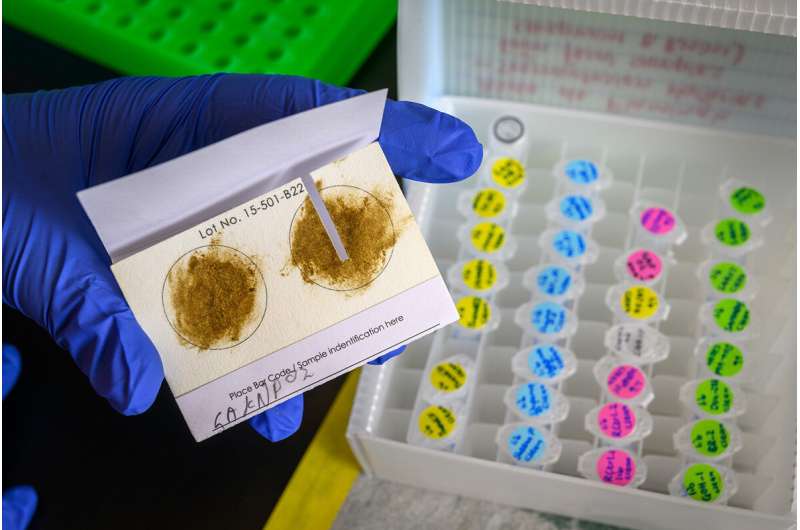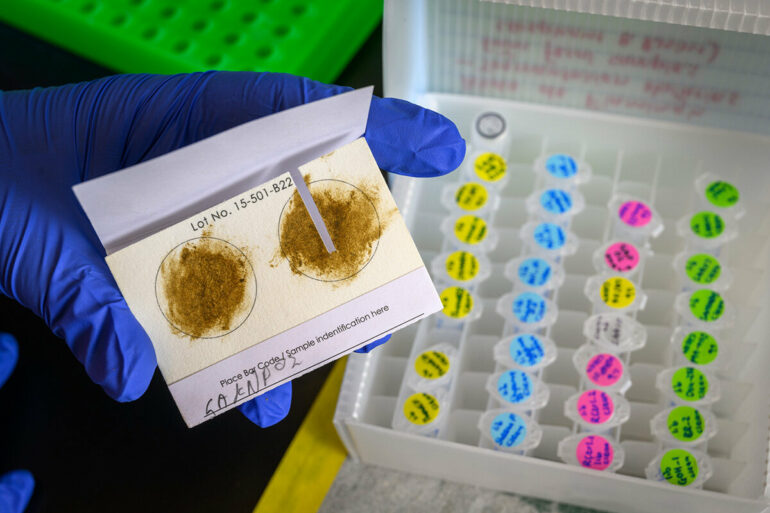A new DNA-collection approach allows scientists to capture genetic information from wildlife without disturbing the animals or putting their own safety in jeopardy. The protocol, tested on elephant dung, yielded enough DNA to sequence whole genomes not only of the elephants but also of the associated microbes, plants, parasites and other organisms—at a fraction of the cost of current approaches.
The researchers report their findings in the journal Frontiers in Genetics.
“We combined existing methodologies in such a way that we are now able to use noninvasive samples to generate genome-scale data,” said Alida de Flamingh, a postdoctoral researcher at the University of Illinois Urbana-Champaign who led the work with U. of I. animal sciences professor Alfred Roca. “This allows us to assess wildlife populations without having to dart, capture or immobilize animals.”
Collecting DNA from elephant dung is not new, Roca said.
“Elephant fecal samples have been used for decades to study the genetics of elephants,” he said. “But this relies on very cumbersome methods, often involving chemicals that in some cases may be dangerous. The collections are bulky, they’re hard to ship and they have to be refrigerated, making the whole process very costly.”
De Flamingh tested a relatively inexpensive alternative: using postcard-sized data-collection cards that have been treated to prevent the samples from degrading. Previous research has shown that once samples are smeared on the cards, they can be stored for months without refrigeration.

Postcard-sized sample collection cards offer an affordable alternative to more cumbersome methods of collecting and storing the genetic information in dung. The cards do not need to be refrigerated and maintain viable DNA for months after collection. © Fred Zwicky
The inspiration for the study came from de Flamingh’s work with U. of I. anthropology professor and study co-author Ripan Malhi, whose laboratory focuses on ancient DNA.
“Ancient DNA can be problematic because samples are degraded and may yield very low levels of target species DNA,” de Flamingh said. Obtaining genomic data from dung can be similarly challenging, with lower elephant DNA concentrations than are available from blood samples. “I thought, this sounds like an excellent opportunity to test whether the same methodologies can be applied to noninvasive samples to generate the same type of data.”
The team first collected samples from zoo elephants in experiments designed to determine how long after defecation the dung would yield viable genomic data. The Jacksonville Zoo and Gardens in Florida and the Dallas Zoological Gardens allowed the team to collect samples from their African savanna elephants. The researchers
